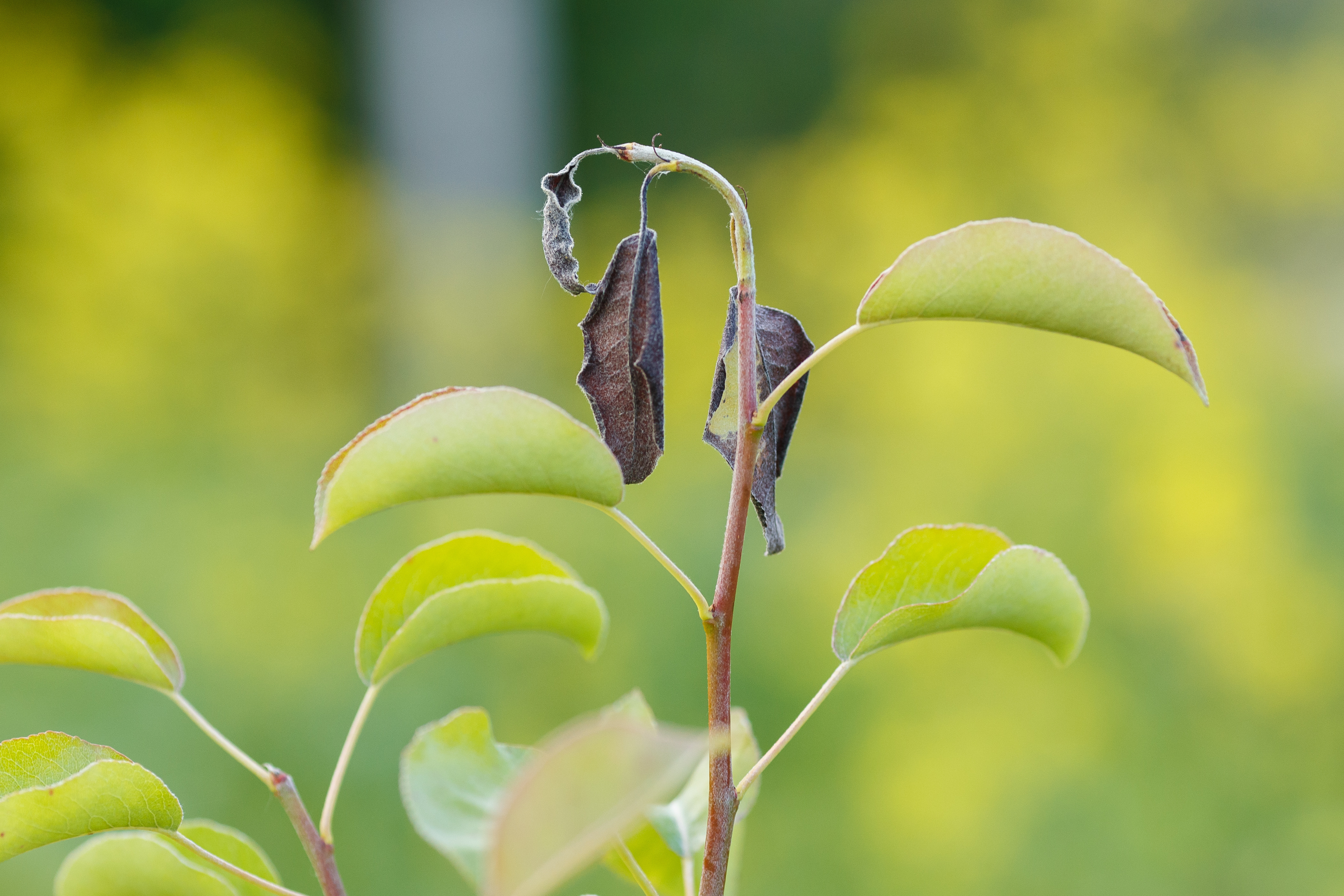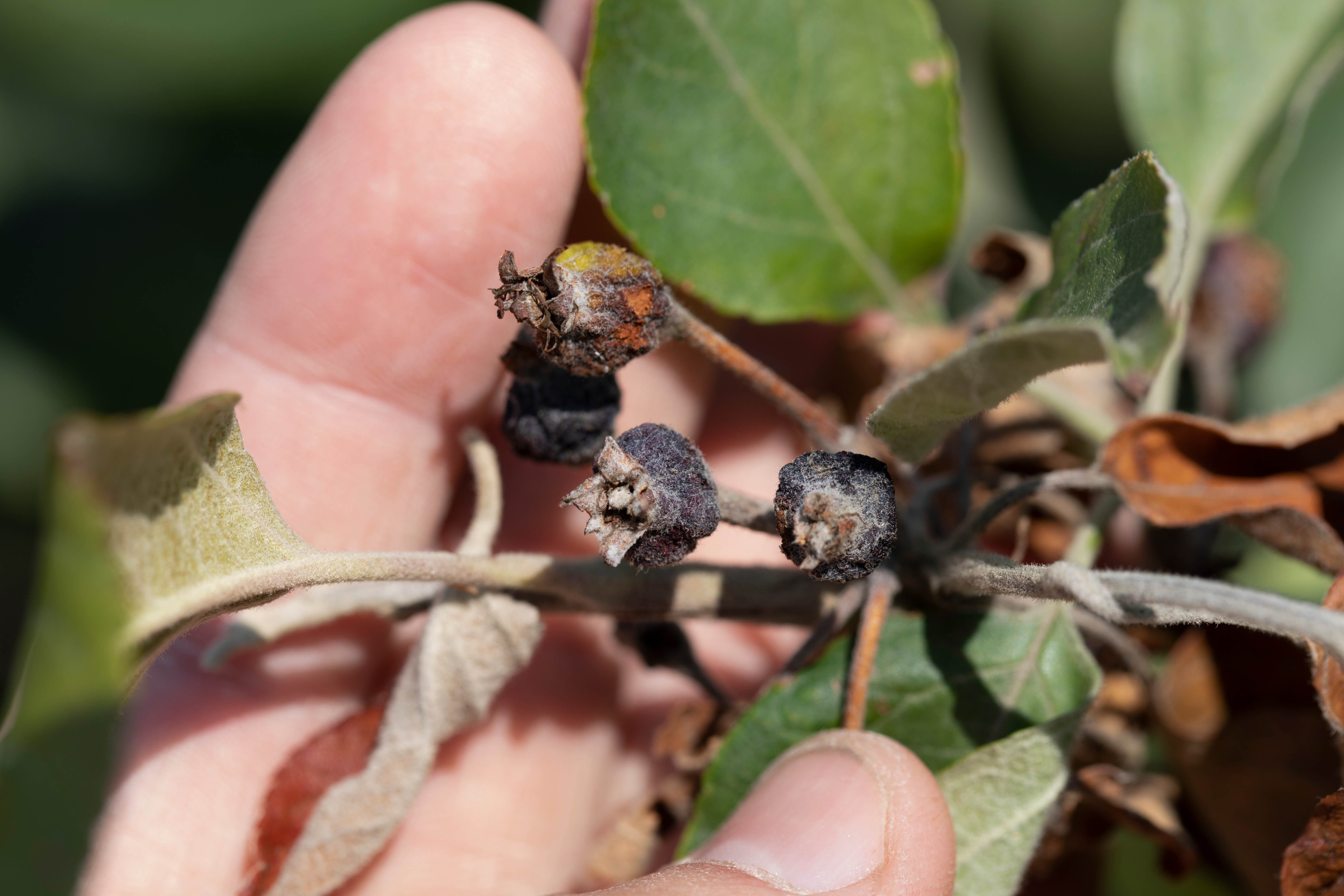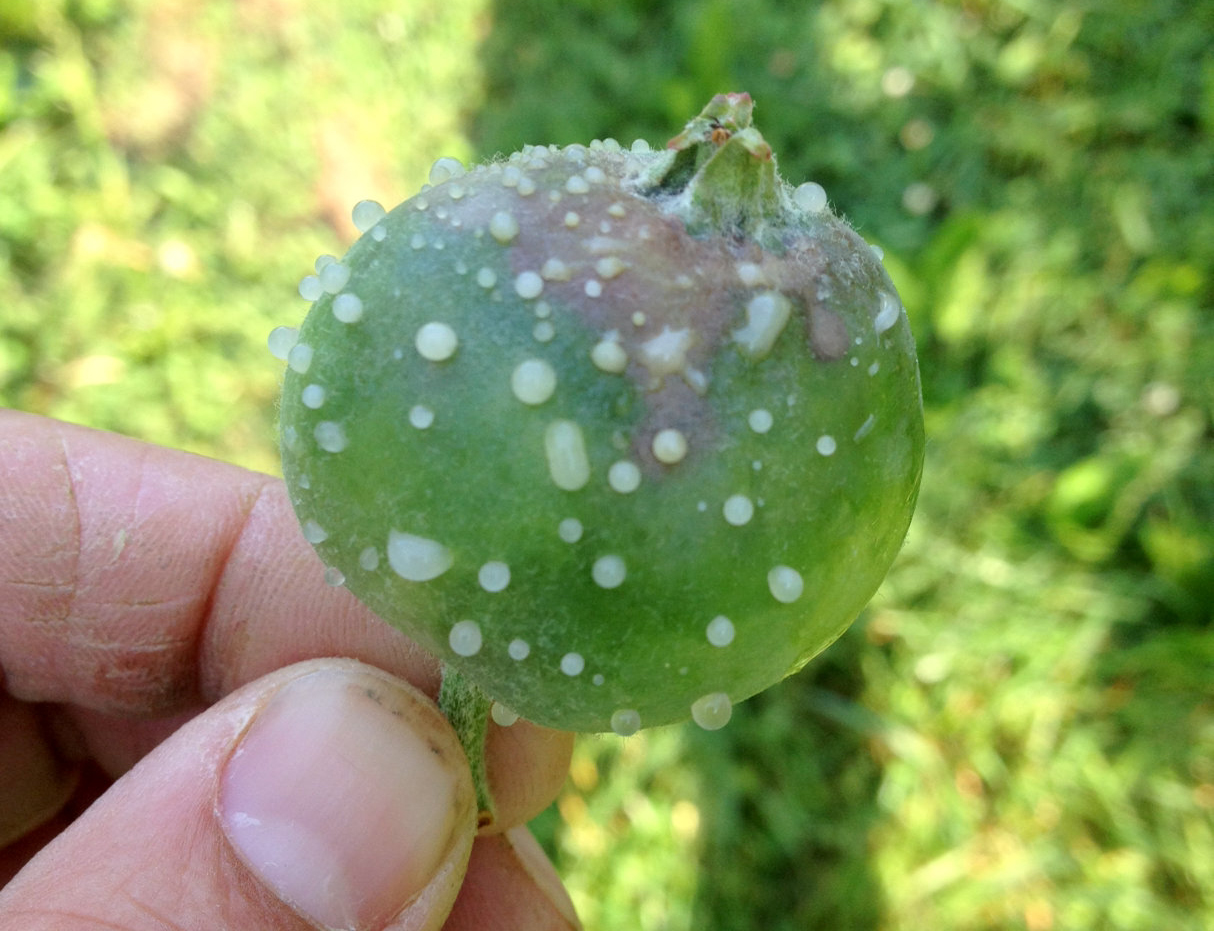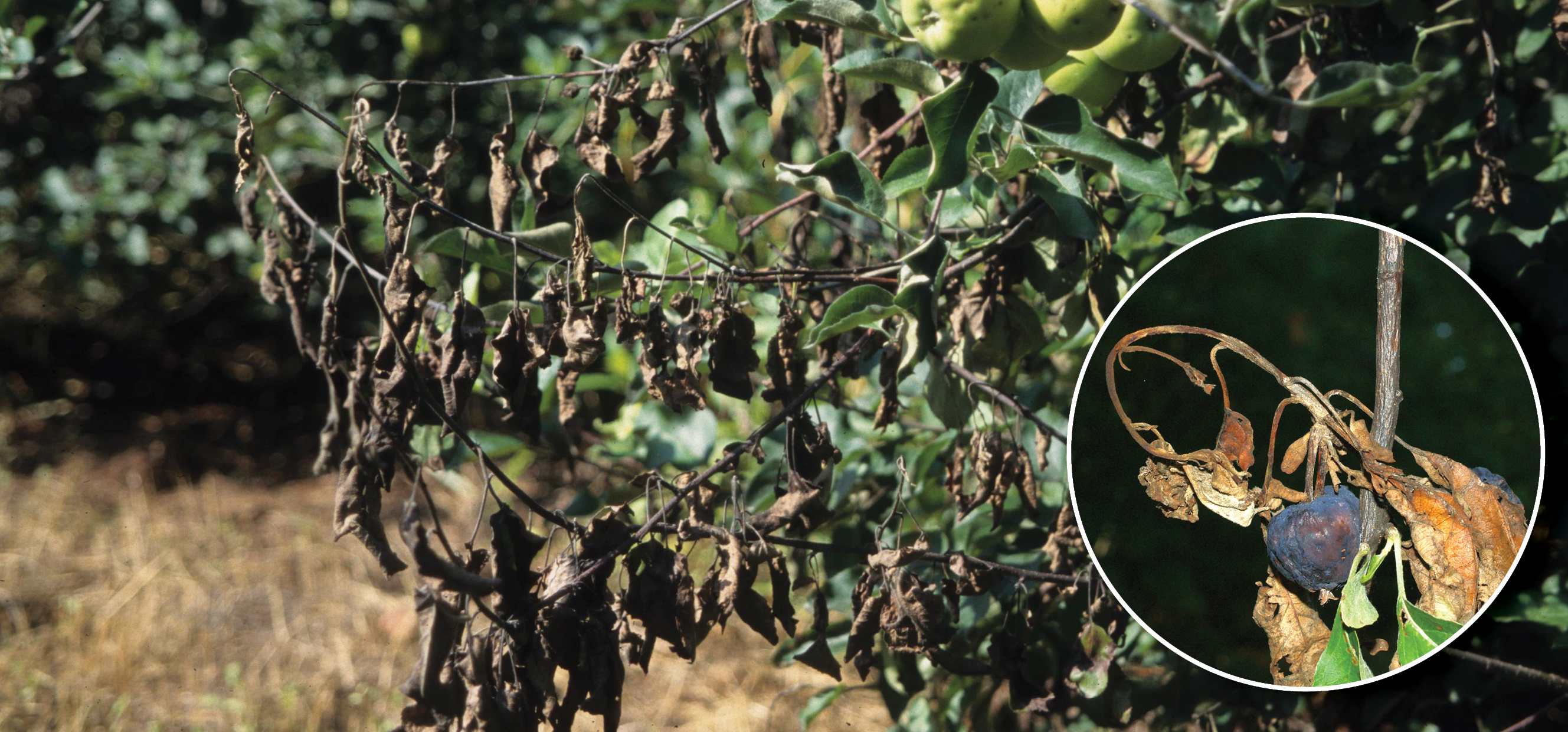
Fire blight is a declared pest in WA
Fire blight is not known to occur in Australia and must be reported to DPIRD if found or suspected to be present in WA.
Early detection is critical to help protect the WA fruit and nursery industries
About fire blight
Fire blight (Erwinia amylovora) is a serious bacterial disease of apples, pears and other plants in the rose family (Rosaceae).
This disease is not present in Western Australia. Early detection and reporting of fire blight will help protect the WA fruit and nursery industries.
- Fruit trees: apples, pears, quince, loquat, plum and apricot.
- Berries: raspberries and blackberries.
- Ornamentals: Crab apple, photinia, ornamental prunus, rose and other plants in the rose family.
- Plants look as if they have been scorched or burnt, hence the name “fire blight”.
- Blossoms, shoots and leaves wilt and turn brown or black.
- Shoots and branches bend into a ‘shepherd’s crook’ shape.
- Discoloured sunken areas, cankers and cracks appear on branches, trunks and rootstock.
- Bacterial ooze seeps out of cankers and infected fruit when the weather is warm and humid.
|
Scorched apple fruit blossoms affected by fire blight |
|
|
Shepherd’s crook symptom |
|
|
Fire blight cankers form on stems |
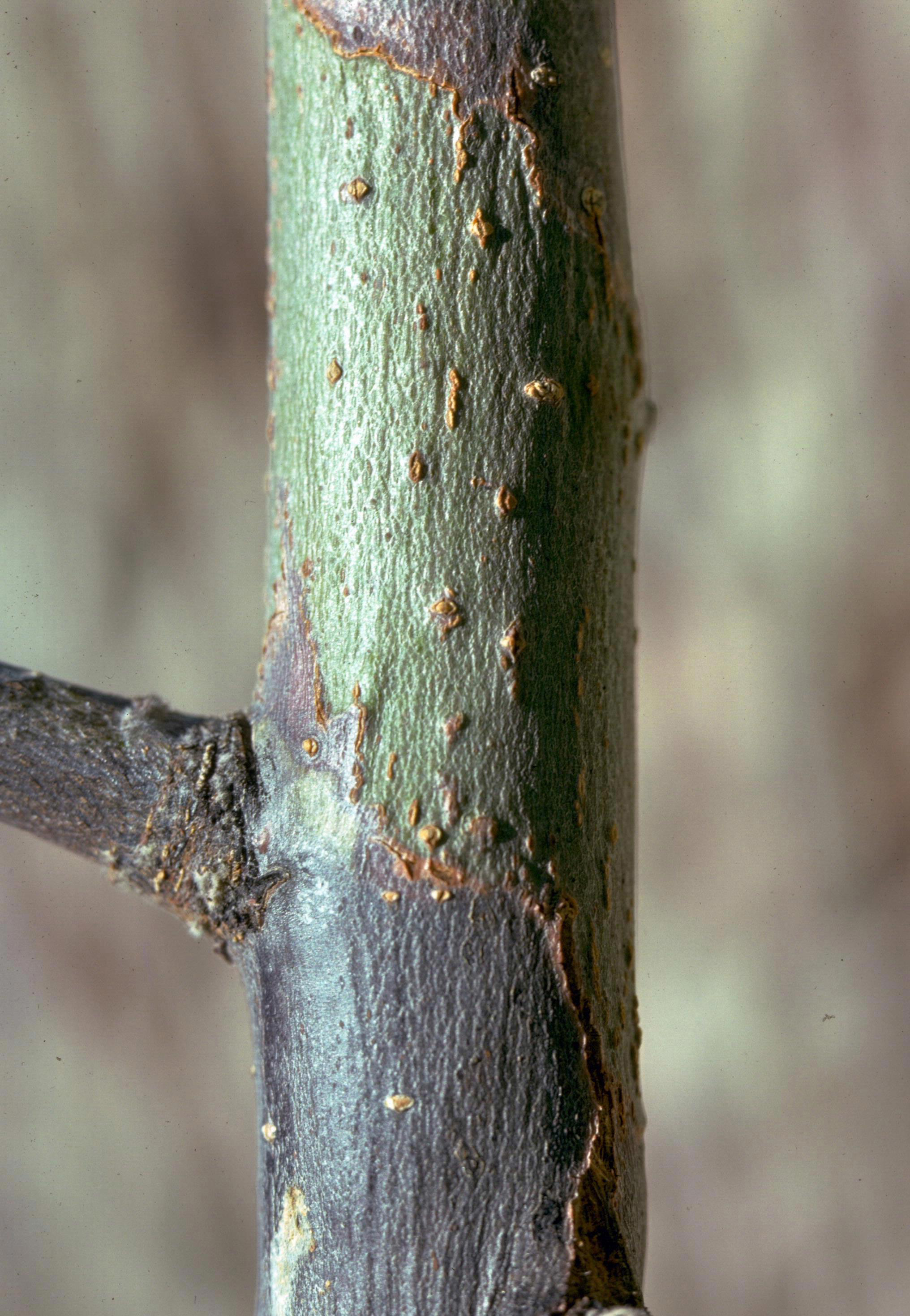 |
|
Bacterial ooze on infected fruit |
|
Fire blight reduces apple and pear production and whole orchards can be destroyed.
Fire blight also attacks ornamental plants and berries causing losses in nurseries and gardens.
There is no cure for fire blight.
- Fire blight bacteria ooze out of the infected tissues of host plants.
- The bacterial exudates can spread locally by wind, rain, insects and birds or when plants rub against each other.
- Fire blight enters the plant through surface injuries caused by insect feeding, hail and mechanical damage or through natural openings in the flowers.
- Bees can introduce the bacteria to blossoms during pollination.
- Fire blight travels long distances on infected plant material or on contaminated equipment or people.
- The bacteria overwinter in cankers formed on infected limbs or twigs.
Legal duty to report
Fire blight is not known to occur in WA.
Erwinia amylovora (Burrill 1882) Winslow et al. 1920 is a declared pest under section 12 of the Biosecurity and Agriculture Management Act 2007.
This means that any person who finds or suspects the presence of fire blight must report it to DPIRD.
WA's freedom from fire blight is supported by general and specific surveillance, and specific import requirements to prevent its entry.

